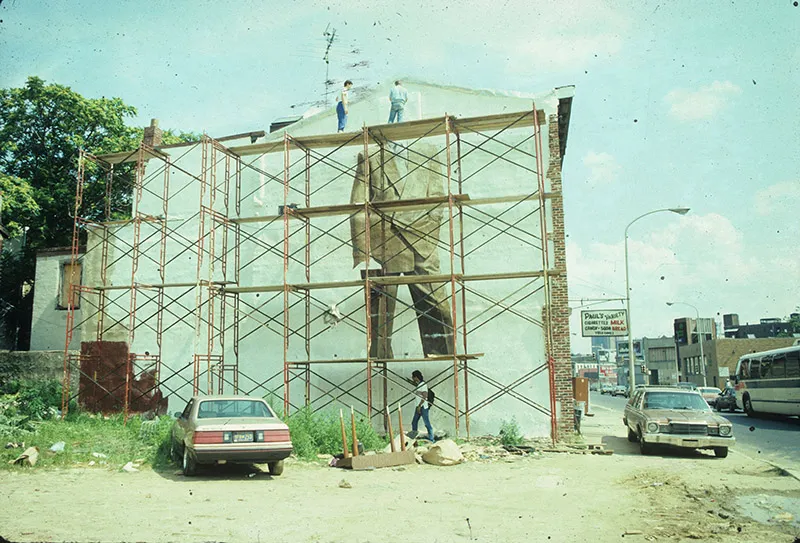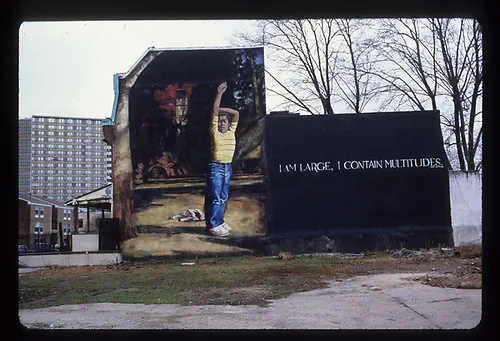Dr. J (Julius Erving)

Twitchell was known for his portraits, and he lobbied to paint basketball great Julius Erving in a business suit instead of a uniform to portray him more as a man and role model than simply another well-known athlete. The dignified, full-length portrait is so tall that Erving’s head just fits under the peak of the three-story building. The image was first painted on large squares of parachute cloth, which were then adhered to the wall surface with acrylic gel. The cloth’s smooth surface allowed Twitchell to craft Erving with uncannily realistic detail, from the crease in his tan suit trousers to the gold bracelet on his right hand. Local residents, who maintain a small park in front of the mural, claim that the real Dr. J had tears in his eyes when he saw the completed portrait for the first time. Dr. J is also the only Philadelphia mural so respected that it appears in homage in another mural, the student-painted panorama of urban life on the Spring Garden Street Bridge.
“The mural was universally applauded. It showed that murals have the potential to be great. The level of expectation was raised,” Jane said. The mural helped alter public opinion about the program, too. “The art snobs, people who’d been looking down at our murals, started to change. There was a ripple effect—foundation and grants started to emerge.”
Sponsor
PA Council on the Arts

